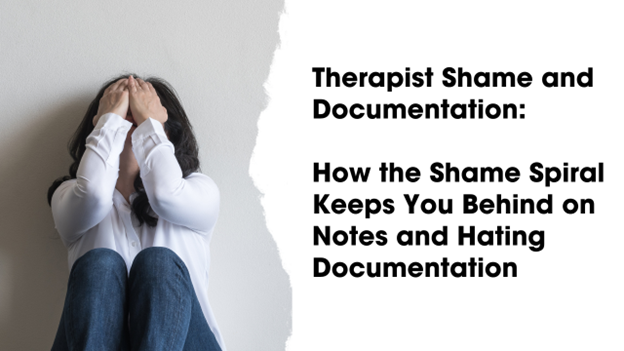
Conducting a Successful Therapy Intake with Your Clients
One of the most important interactions you have with clients is during your therapy intake interview. During this appointment, you build initial rapport, hear the client's reasons for seeking therapy, and form a basic foundation for a treatment plan. The intake interview allows clients and behavioral health clinicians to envision how future sessions will proceed.
Preparing for counseling intake sessions so they can proceed successfully is crucial. From filling out paperwork to asking the right questions, your counseling interview should set the strong groundwork for the rest of your relationship.
Read on for important tips before, during, and after your counseling intake interview.
Table of Contents
Free Download - Therapy Intake Form

Download our counseling intake form to streamline the collection of client data
Before the Therapy Intake Session
You should start the groundwork for a strong relationship before your client arrives. By preparing for the therapy intake session beforehand, you can pave the way for a more positive experience later.
Here are some steps to take before the appointment begins:
- Prepare paperwork: Intake sessions with patients require a significant amount of paperwork. From psych evaluation forms to HIPAA notices and medical history documents, these types of paperwork are critical for a client to start treatment. Many behavioral health clinicians also create a welcome letter that outlines their background, methodology, contact information and other words of welcome. You should prepare all necessary paperwork ahead of time so that it's ready for the intake session. That way, you can get started sooner and avoid any unnecessary delays.
- Review the client's background: Next, it's also good practice to review a client's history before beginning an intake session. You can use medical history or other notes to understand their symptoms and situation. Then, you can run the therapy intake session with these ideas in mind and use them to help if the client is reluctant to speak. Your new client might have provided some notes in their initial appointment request, or previous doctors or therapists might pass along these notes to you.
- Brainstorm questions: You should note important questions to ask during the counseling intake session. Some clients might be ready to talk about their feelings and experiences, while others might need questions to prompt them. Either way, you should prepare questions about their current symptoms and whether they're experiencing feelings of self-harm. You can also ask other questions specific to their evaluation form or situation.
When Your New Client Arrives
The initial moments of a client's intake session are typically filled with paperwork and policy explanations. It might be the client's first time at your facility, so it's helpful to introduce them to your office and other important areas. Overall, the first moments allow the two of you to introduce yourselves and go over important aspects of the counseling process.
These are other components to consider for a client's arrival:
- Explaining paperwork and other procedures: You will typically begin the therapy intake session by discussing paperwork. You can look through the client's answers and ask questions where needed. Next, you can explain your usual procedures for therapy. You can discuss aspects like your cancellation policy, emergency contact requirements, how you typically handle payments and insurance and other similar aspects. Lastly, you should explain the ethical and legal considerations of therapy, such as confidentiality.
- Establishing rapport: The first moments with a client are important for building rapport. Make sure to greet them kindly, using a positive tone and body language. You could use small icebreakers or small talk to settle into the session and give them a chance to relax. The client might feel uncomfortable or nervous about the first session, so taking the time to build rapport can help them feel more relaxed.
- Navigating anxiety: Next, it's important to remember both you and your new client might experience anxiety about the therapy intake session. The stiffness of paperwork and procedures makes the first session distinctive from others. You should strive to make the appointment as comfortable as possible. If they express feelings of nervousness, explain that therapy anxiety is normal. Take time for questions or brief check-ins to ensure your client feels okay and understands everything. You could also explain how you normally conduct sessions, which might make clients feel more comfortable returning for follow-up appointments.
- Answering questions: Lastly, the beginning of your session is a great time for answering questions. You can clear up any confusion about payment processes, upcoming sessions, confidentiality concerns or any other questions. Try to encourage questions as much as possible and give frequent opportunities to do so.
During the Therapy Intake Session
After you explain typical office procedures, you can complete the next aspects of the intake session. You and your client will have a conversation about how they've been feeling, why they're seeking counseling, their goals for counseling, their background and more. The intake session gives a client a sense of your personality and listening skills during a session. At the same time, behavioral clinicians use the time to examine behavior and build a tentative diagnosis.
Every therapist has a different technique for counseling intake conversations, but here are some crucial actions for everyone to include:
- Explain how your therapy process works: Many counselors start the conversation by asking clients if they've ever been in therapy before. If they have, you can explain how your typical process works and how it might differ from previous providers. Or, if this is your new client's first time in therapy, you can explain the broader purpose in addition to an explanation of your usual techniques. Once you've finished, give your client time to ask questions about your approach or voice any concerns they might have.
- Use active listening: Next, you and your client will begin a conversation back and forth. As you ask questions and they reply, it's crucial to use active listening techniques. For instance, turning toward them and using open gestures can show a higher level of engagement in the session. Show your client that you're alert and listening attentively. You should also show empathy by showing interest in what they have to say, speaking in a kind manner, and asking questions when appropriate. Active listening techniques can make clients feel more comfortable and help them open up more about their experiences.
- Ask important questions: There are many topics to cover during a therapy intake session. From introducing yourself and your methodology to learning about a client's history with therapy, you have a lot of ground to cover. However, it's important to remember all of the necessary questions for your session. It's crucial to ask for background information like family history, medical history, and current symptoms. Most of all, you should ask what the client wants to discuss, or if they have any pressing concerns to share.
The following sections explore what information you should collect in more detail.
Helpful Information to Collect during a Therapy Intake
Your intake session should cover important information about your client that you can use to form a diagnosis or path for treatment. Here are examples of information to collect:
- Basic symptoms: First, you should note the client's reasons for seeking therapy. The client might indicate persistent feelings or symptoms that are hindering their daily lives. You can ask follow-up questions about how these feelings impact their physical and emotional well-being. For instance, they might discuss feelings of ongoing anxiety that make it challenging to complete everyday tasks. Once you have enough information, you should describe these symptoms and indicate whether you think they signify a particular diagnosis.
- Social and developmental history: Next, you should collect details about the broad area of social and developmental history. This area can include ethnicity, religious affiliations, hobbies and leisure activities, typical coping strategies, financial status, housing status and more. You can also indicate whether there are any barriers to treatment, such as resistance to therapy or other limitations.
- Client's goals: Understanding a client's intent for therapy can help you get started with a treatment plan and track progress later. The goal can be as broad as “feeling better” to stopping a specific behavior. If the client doesn't have one in mind, you can discuss possibilities with them. Identifying an ultimate goal is important for clients to stay motivated and interested in therapy.
- Familial history and support levels: Next, it's also important to record family history for the intake session. The family's psychiatric history might be able to help you form a diagnosis. You should also talk about the family's support levels, financial status, and any history of substance abuse. Other areas, like what the client's childhood was like, could also impact a client's emotional state or coping strategies. You can also delve deeper into familial history in the following sessions.
- Medical history: You should also talk about the client's significant medical history. These conditions can impact their emotional state and the type of medicine they can take. Take note of any prescriptions they use, prior hospitalizations or other physical conditions.
- Mental status exam: Lastly, you can take notes on the client's physical demeanor throughout the session. You can note their emotional state, receptiveness, physical movements, facial expressions or any other attribute they display during the exam. For example, you could note that a client speaks very slowly or seems inattentive throughout the session.
As the session goes on, you can take notes about your client's comments. You can also note other observations about behavior, mood or other physical symptoms. If you need help, you can use an intake interview report example, such as one from ICANotes, to make sure you ask all of the important questions.
Watch this one-hour on-demand webinar to learn how to conduct a biopsychosocial intake, what questions to ask clients, and how to write a biopsychosocial assessment.

More Therapy Intake Interview Questions
If it's one of your first therapy intake sessions, it might be helpful to look at specific questions you can ask. Read on for a few examples.
Some of your opening questions might look like:
- How are you today?
- What is your name and address?
- What are a few forms of contact information?
- What is your education level and employment status?
- Do you have any religious affiliations?
And these are some background questions you can ask:
- What is your insurance information?
- What is your psychiatric hospitalization history?
- Do you have a history of substance abuse?
- Do you have a history of trauma?
- Do any of your family members have a history of mental illness?
- What was your familial structure like during childhood?
Lastly, here are more specific questions about the client's motivations for counseling:
- Why are you seeking counseling?
- What is the problem from your view?
- How does this problem make you feel?
- Is there anything that makes the problem better?
- What activities make you feel calm or happy?
Wrapping up the Therapy Intake Session
As you finish the intake session, you can consider future goals for the client. You can wrap up your intake with a variety of procedures, such as:
- Asking the client how they feel: It's good to check in with the client at the end of the session to see how the appointment made them feel. Whether it's confusion, relief, anxiety or hope, encourage the client to put their emotions into words. This process can help them work through their feelings and allow counselors to prep for the next session. For example, if the client expressed anxiety, you could keep that in mind for the next meeting.
- Assigning homework: Some behavioral health clinicians assign homework to clients to complete in between sessions. Ideas like journaling and meditation are often great tools for clients to try. Toward the end of your intake session, you can consider whether assigning homework would help the client at this time.
- Giving a diagnosis: Depending on the information you gather and your methodology, you might give the client a diagnosis at the end of the therapy intake. A diagnosis might help the client and answer a few of their questions, especially if they ask for one. However, other clinicians prefer to ponder their notes more and perform additional research before giving a diagnosis.
- Offering additional information: Lastly, you can suggest helpful resources to the client. If you have provided a diagnosis, you might offer an article or book that explains more about the condition. Or, you can suggest a resource that could assist the client between now and their next session. For instance, if the client discussed intensive feelings of anxiety, you could provide an article about coping techniques for anxiety.
At the close of the session, you can discuss scheduling for future appointments. Not every client will return for the second session. But if you approach your therapy intake interview with compassion and active listening, you can make it more likely the client will come back.
Use ICANotes for Client Intake Interviews and Assessments
A successful intake session could impact the rest of a client's counseling process. Without detailed notes and documentation, you won't be able to provide the highest level of care.
With ICANotes, you can improve your note-taking processes. As the premier EHR for the behavioral health specialty, we understand the importance of high-quality notes.
We have a built-in mobile-friendly intake module which allows the client to enter their entire history via the patient portal. This history intake saves in PDF form and can be pushed into your initial evaluation automatically — saving you significant documentation time. You can simply review and add additional detail to the information the client provided during your intake interview.
Our pre-configured note templates can help you create comprehensive notes in a fraction of your usual time. With our menu-driven clinical content templates, you can write individualized and thorough notes by clicking on menu options, very little typing is required. We also offer a wide range of sample notes to help behavioral health clinicians get started.
To learn more about ICANotes, request a free trial today. Or, contact us today for more information.
Start Free Trial (no credit card required!)













